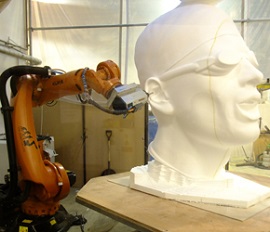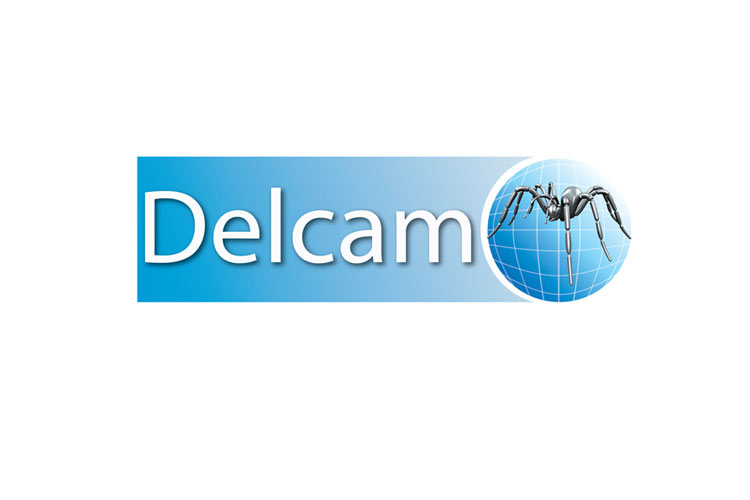A combination of Autodesk’s Maya design software, Delcam’s PowerMILL Robot programming system and a KUKA robot allows special effects company, Artem, to bring amazing projects to life. A video showing the process used is on Delcam.TV at www.delcam.tv/artem
Artem provides special effects of all types from giant puppets to small film props from its base in West London. “We get involved in all sorts of technology, the most recent being robot machining and 3D printing,” explained Artem CEO, Mike Kelt. “Much more is done on a computer now than has ever been done in the past when it used to be very much an industry based on hand skills.”
“One of the challenges is dealing with clients who aren’t entirely sure what they want,” added Mr. Kelt, “so you have to tell them what you think they want and get them to approve things. If you can do the design on a computer with Maya and send them an image that’s rendered, then they can go “yeah that’s it”, and we can carry on with the design and manufacturing process.”
 The team at Artem explained how the process develops, starting with modelmaker, Jim Bones. “My main job is to pose the figure,” he said. “I sit down with the sculptor and we’ll tweak everything to get it all in the right positions. Importing a RIG model on Maya is a massive advantage as it comes with all these handles. I can just grab them and pose every little bit of the model. It’s all very easy to use.”
The team at Artem explained how the process develops, starting with modelmaker, Jim Bones. “My main job is to pose the figure,” he said. “I sit down with the sculptor and we’ll tweak everything to get it all in the right positions. Importing a RIG model on Maya is a massive advantage as it comes with all these handles. I can just grab them and pose every little bit of the model. It’s all very easy to use.”
“We often start with the photograph and position the Maya RIG model to look like the photograph,” continued Andrew Freeman, Digital Sculpture and CNC Supervisor: “Then we can export the model from Maya into another software, a sculpting package, that’s going to allow us to fine tune the model, add on the clothing, change the muscles to give the look that the client wants. Once the design has been approved, we can start chopping the pieces up and putting them into the Delcam software to prepare them for cutting on the robot.”
The programs for the robot are developed by Design Engineer, Ken White. “We import the part designs into PowerMILL Robot as a series of STL files,” he stated. “For each element, we create roughing and finishing passes which we then simulate to see how they machine. Once I am happy, the toolpaths are output as G-code to the KUKA robot for machining.”
“Because we are using STL files, creating boundaries is very important to be able to get to certain areas of the model,” he added. “The robot allows us to machine very large pieces so keeping the number of parts to as few as possible. We are able to use the software to see how the robot is going to cut the material and to see the finish we are going to get, while the software also lets us see how the robot will react in the cell and make sure that it is not going to do something silly.”
“I see a really bright future for Delcam with this company – we’re delighted with the robot and the software,” concluded Mr. Freeman. “We are going to try and extend the software to the other machines now. For me, PowerMILL is very easy to use and it’s very good at what it does.”


